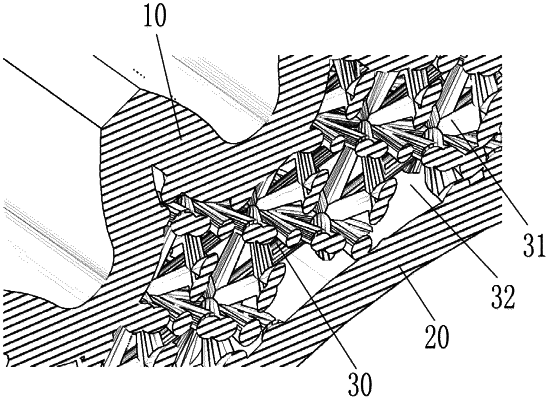| CPC F16H 55/06 (2013.01) [B22F 5/08 (2013.01); B25J 9/102 (2013.01); B33Y 10/00 (2014.12); B33Y 70/00 (2014.12); B33Y 80/00 (2014.12)] | 10 Claims |

|
1. A reducer gear for robot, comprising: an outer contour layer and a reticulated porous base layer cladded by said outer contour layer, said outer contour layer including a mounting surface layer, a tooth surface layer, and a connecting surface layer, which is connected between the mounting surface layer and the tooth surface layer and forms a complete gear outer contour together with the mounting surface layer and the tooth surface layer;
the reticular porous base layer is located in a cavity formed by the outer contour layer and has fiber trabeculae with porous grid structure;
the reticular porous base layer is formed by a reticular porous base layer structure printed with 3D printing and constructed in the following steps:
computing a comprehensive load spectrum of a cladded surface of the reticulated porous base layer cladded by the mounting surface layer and the tooth surface layer, according to a comprehensive load spectrum of forces and torques at different local points of the mounting surface layer and the tooth surface layer;
taking the comprehensive load spectrum of the cladded surface as a load boundary condition for an optimization design of the reticulated porous base layer, and on a premise of ensuring a force and torque transfer support strength, obtaining a spatial stress spectrum of the reticulated porous base layer in a finite element topological structure optimization method, for an optimization objective of lightweight;
performing a material allocation design for each spatial point in the reticulated porous base layer based on the spatial stress spectrum of the reticulated porous base layer, the spatial points in the reticulated porous base layer where a material is allocated with constitute fiber trabeculae, and determining a thickness of each of the fiber trabeculae at every point along its axis and determining a spatial arrangement and connection relationship between the fiber trabeculae based on the spatial points allocated with the material, and the spatial points in the reticulated porous base layer not allocated with the material constitute inter-trabecula porous cavities.
|